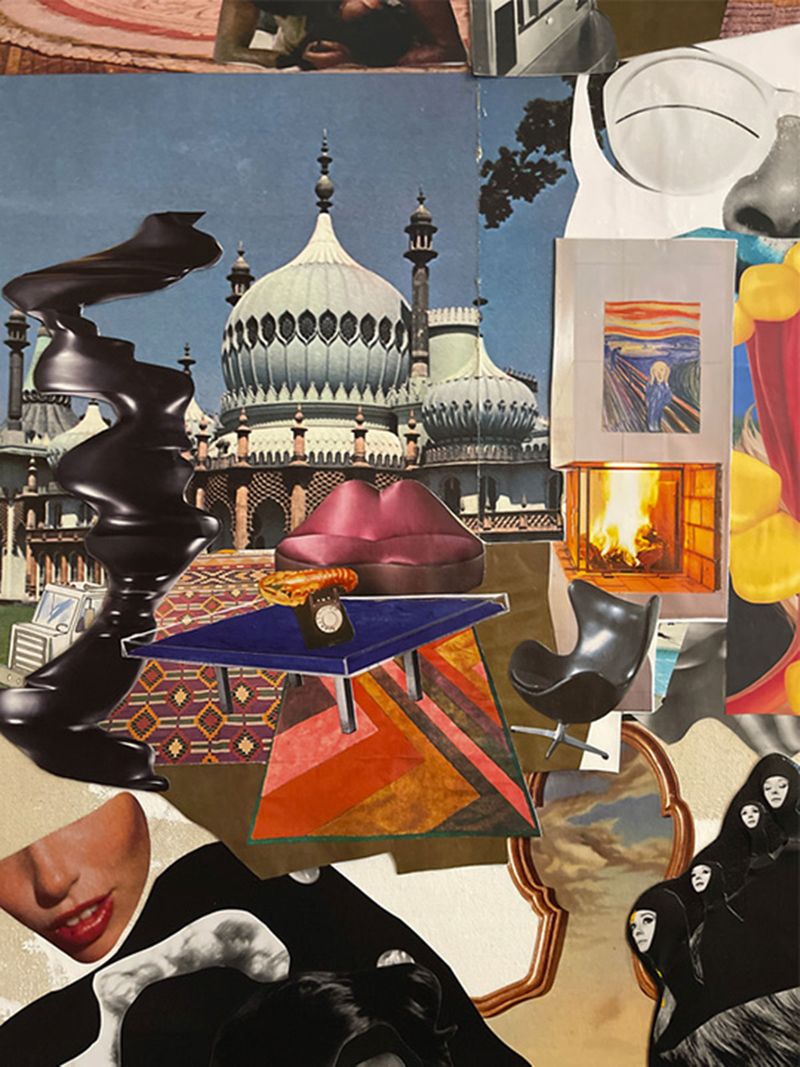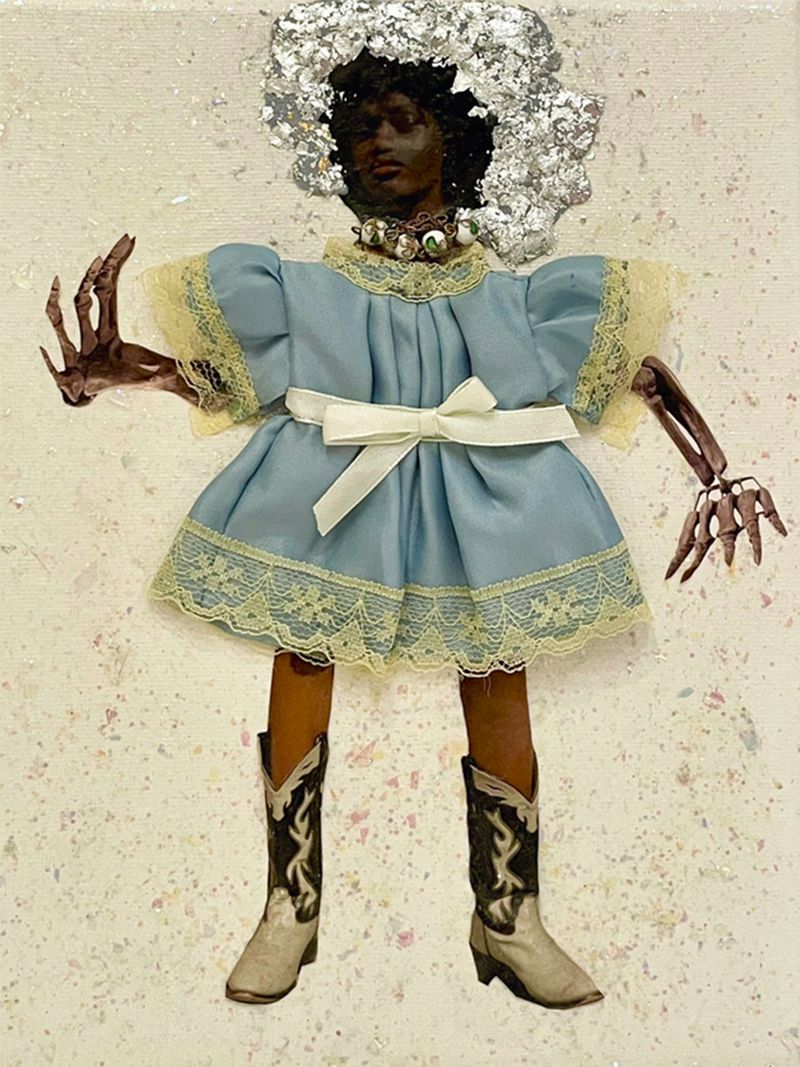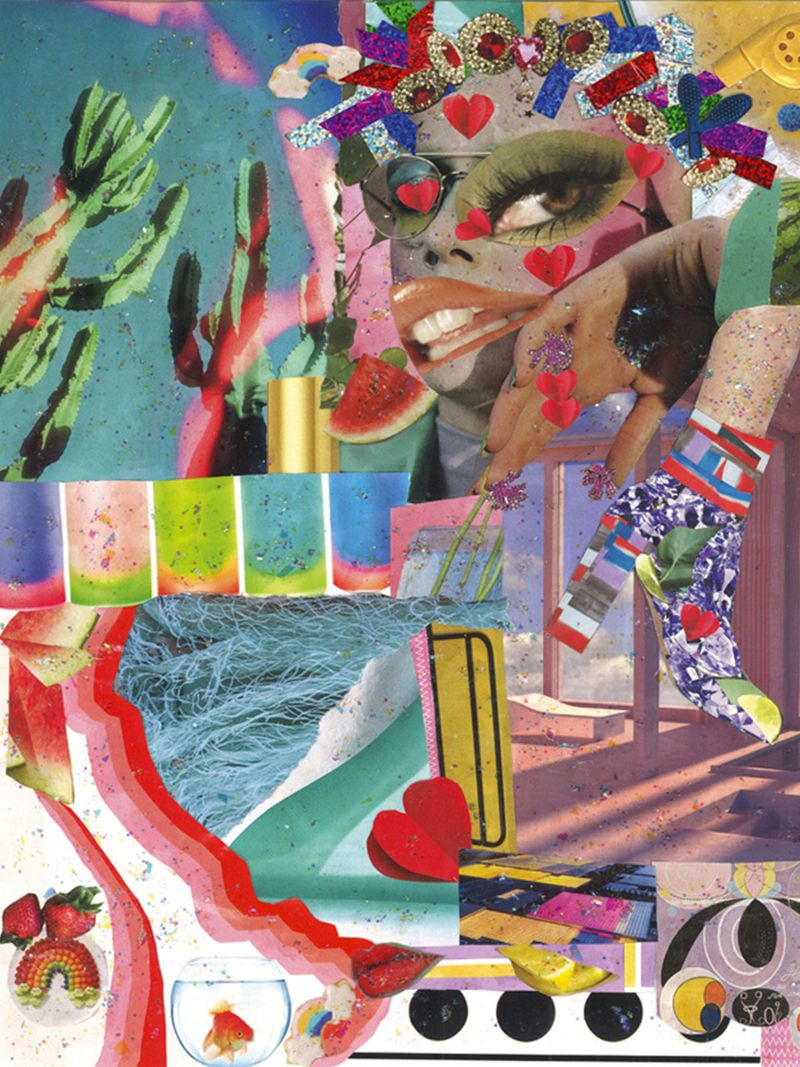
To enter Sarah Coleman’s world is to leave behind much of what feels regular. It’s a psychedelic funhouse of frolicsome figures and repurposed treasures. Here, you’ll find a chair dressed in vintage magazine paper with archival brand images, a glow-in-the-dark handbag, and iconic prints edited using the Facetune app – elements that she included when redesigning the Fendi store in Miami ahead of Design Miami last year.
It’s royal recycling – as Sarah fashions designer materials, logos and brand archives in ways they could’ve never been envisioned before. Imagine a folding chair reupholstered with material from a Louis Vuitton luggage piece, and Gucci monogram sleeves for hand sanitizers and pill bottles.
It’s no surprise that Sarah is loved by luxury fashion houses with a free-spirited mood, like Fendi, which recently collaborated with her for a Spring-Summer 2021 capsule collection. Taking cue from 1990s streetwear and the 1970s, which she once described as “the greatest fashion era of the 20th century,” the ‘Vertigo’ collection features her wavy, hypnotic twist on the classic ‘FF’ logo.
To celebrate the launch of the collection, the brand unveiled the exquisite Fendi Caffé on the iconic terrace of la Rinascente in Milan’s Duomo Square, as a pop-up that satiated guests and their Instagram feeds from 11 May until 7 June this year. The multisensorial experience also included Sarah’s swank take on the ‘FF’ logo that dressed every part of the café – from cabinets to cappuccinos.
“After I finished the Fendi project, I felt an unexpected sense of sadness,” Sarah tells The Kurator. “It was hard for me to pinpoint [what saddened me] because a project I had worked so hard on for nearly a year was well-received and successful. After talking to a few people and sitting by myself, I realized how fulfilled I was by the process and that I was just feeling sad about how that part of the project was over. The results are a byproduct of what I love to do – to create, collaborate and use my hands.”
It’s this gusto that informs Sarah’s practice, which is evident in the remarkable collages that she has exclusively created for this edition of The Kurator. “The collages were expressive of all the feelings I had. They were a way for me to recharge, and the medicine for the sadness I was experiencing. I felt like I had to get back to work and use my hands to create and express,” she shares.
The resulting collage works, aptly titled Recharging, are a mélange of cultural iconography – an image of a lips sofa with a Daliesque mood sits next to a drawing of Edvard Munch’s haunting The Scream (1893) composition; Sigmar Polke’s Running Scissors (1996) hurry right past an ancient female head sculpture; and a vintage door handle sits atop a 1970s Cadillac.
“I was really happy with the final products, which is usually when I know it’s time to stop on that particular piece,” Sarah notes about the collages that feature several Richard Avedon
images. “I was free with where to place things and what to use. When I work well, I go to a place where there isn’t much room for decision-making and order because everything just flows. It’s almost like there are no verbal explanations of what I’m doing unless they’re analyzed and even then, it’s just someone’s perception of what it means and what’s going on.”
And as Sarah continues to grip attention with her work, she reveals two established and emerging creatives, whose work in collage art she greatly admires.
Man Ray (1890-1976)
One of the most compelling creatives of the 20th century, American avant-garde artist Emmanuel Radnitzky, popularly known as Man Ray, was a polymath of mediums like collage, photography, film and painting. Charting the breadth of mediums that he worked in gives a fuller sense of the artist and the man behind it, as he continued to take risks and emerge as a leading figure in the Dada and Surrealist movements, whilst carving out his own distinct aesthetic vocabulary.
The pièce de résistance of Man Ray’s storied career is his photographic series that brings together fashion, portraiture and technical experimentation, such as solarization and photograms, which he termed as ‘rayographs’ – a clever combination of his own name and the word ‘photograph’. The process involved creating images without a camera by arranging found objects onto sheets of photosensitive paper and exposing them to light. Some of his seminal works include solarized and isomorphic portraits of his muse, photographer Lee Miller, and photomontages with multiple exposures like Dora Maar (1936).
His collage experiments also informed his paintings, such as The Rope Dancer Accompanies Herself with Her Shadows (1916). He based the composition on a pattern created by chance when he scattered colored paper scraps on the floor, which he had originally cut into shapes resembling his memory of a dancer’s acrobatic movements. The resulting piece references approaches that are integral to his oeuvre, such as the use of negative space and shadows, application of unmodulated color, and spontaneous compositional decisions. Man Ray’s works are exhibited by Gagosian and are held in the collections of Musée d’Orsay in Paris, and The Museum of Modern Art in New York, among others.
the collections of Musée d’Orsay in Paris, and The Museum of Modern Art in New York, among others.

Ciara Ramirez
Ciara ‘CiCi’ Ramirez is the one to watch for her defiantly whimsical mixed media creations in collage art, fashion design and sculpture. Anything is possible in CiCi’s hybrid world that’s
dominated by creatures in couture – a visual remix that’s both riveting and unsettling. Think about a cross of amphibians carrying a Birkin bag, human-cum-animals lounging in Prada shoes circa 2013, and barbies with skeleton hands. Filled with color and a fantastical swirl of food imagery in works such as I’m a Barbie Girl, in a Sprinkle World (2020) and Stardust and Wanderlust (2021), her hand-cut collages are a scattering of visuals that evoke a multisensorial response.

CiCi deconstructs images and fabricates recycled textiles to create her art, tracing the history of fashion and its subversive elements. Her custom collage works challenge perceptions about femininity through gestalt, which suggests that we look at a group of objects as a unified whole before seeing the individual parts – a concept that she sought training in as an art therapist.


